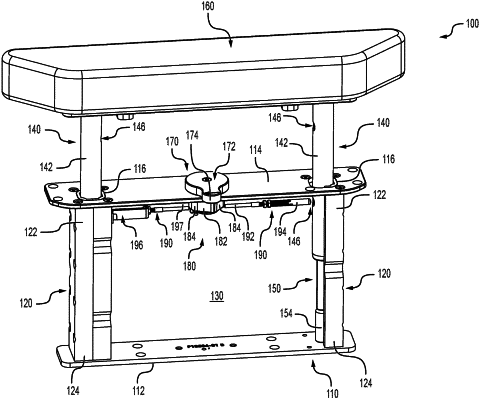| CPC B60N 2/77 (2018.02) [B63B 29/04 (2013.01); B63B 2029/043 (2013.01)] | 15 Claims |

|
1. An arm rest system, the system comprising:
a housing defining a cavity;
one or more actuators at least partially disposed within the cavity of the housing, wherein each of the one or more actuators includes a cylinder defining a cylinder opening, a piston slidably disposed within the cylinder opening, and a piston rod having a first end coupled to the piston and a second end opposite and spaced apart from the first end, wherein each of the one or more actuators is movable between a first position and a second position, wherein the second end of the piston rod is closer to the cylinder in the first position than it is in the second position, wherein one of the cylinder or the piston rod of each of the one or more actuators is static with respect to the housing;
an arm cushion coupled to an other of the piston rod or the cylinder of each of the one or more actuators such that moving the one or more actuators between the first position and the second position moves the arm cushion relative to the housing; and
a lock for retaining the one or more actuators in the first position or the second position,
wherein the lock is movable between a locked position and an unlocked position, wherein the one or more actuators are retained in the first position or the second position when the lock is in the locked position and the one or more actuators are movable between the first position and the second position when the lock is in the unlocked position, and
wherein the lock includes one or more locking pins for engaging the other of the piston rod or the cylinder of the one or more actuators to prevent the one or more actuators from moving between the first position and the second position.
|